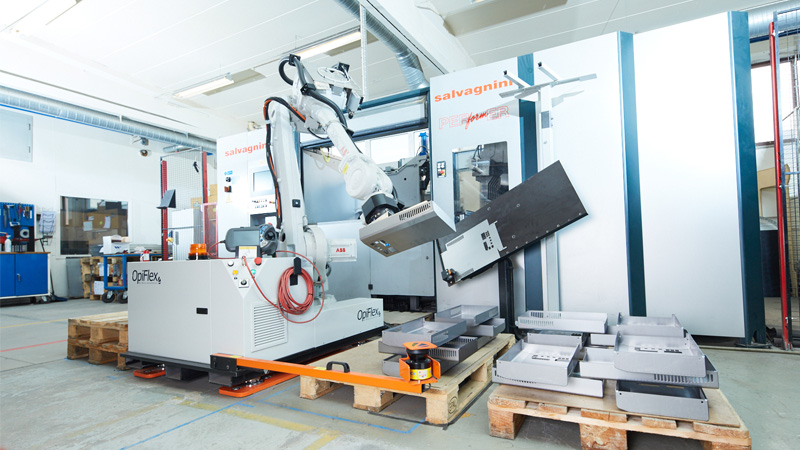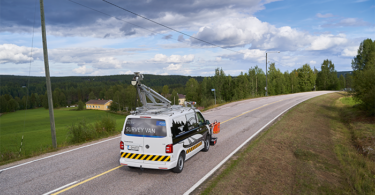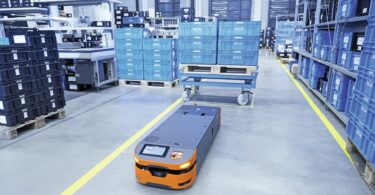As flexible robots rise in popularity, humans and robots are being brought into even closer proximity.
The rise of this collaboration is leading to an increased need for flexible and mobile automation solutions that don't require the use of safety fences. The Swedish robotics company, OpiFlex, has developed a solution to make large industrial robots mobile. It features a patented, fenceless safety solution and uses safety devices from SICK.
“Together with SICK, we have mastered the challenge of automating small-series manufacturing, as well as flexible, high-volume manufacturing,” said OpiFlex CEO, Johan Frisk. “It was very important for us to have a solution without fences, as this provides our customers with a lot more flexibility.”
Small- and medium-sized enterprises (SMEs) are looking to automate the production of small-series manufacturing. But this has been a challenge with the traditional implementation of fixed and fenced robots cells. Now, this kind of automation is possible thanks to the OpiFlex flexible mobile robot cells with fenceless safety and easy robot programming.
With the help of a manual pallet forklift truck, lifting truck, or automated guided vehicle, the mobile OpiFlex robot can be moved to any relevant workstation in a production facility. It is docked and plugged into a previously installed platform and is ready for immediate use. “This allows us to move large robots and let them run at full speed,” said Frisk.
Safe robotic solutions from SICK makes collaboration easy
Two S300 Mini Remote safety laser scanners from SICK are permanently mounted on the mobile robot cell to detect people near the station at the respective application sites. If a person approaches the robot, the safety laser scanner sends a signal to the Flexi Soft safety controller and the robot reduces its speed in the first instance. The robot only stops operating completely if the person enters the safety zone. This increases productivity as the robot does not always have to be stopped completely. The Flexi Soft safety controller also monitors the robot gripper and stops it as soon as a situation occurs in which the robot could lose parts, thus endangering the surroundings.
If the robot is moved to another location, the safety solution also checks whether the mobile robot cell is firmly anchored in the respective docking station. The robot and docking station are perfectly matched for high precision and stability.
“Our solution is innovative because it is very easy to integrate. Everything is included. You take the robot, set it in the right place, and everything is made safe straight away,” said Ake Tornros, Product Manager Safety Systems from SICK in Varby, Sweden.
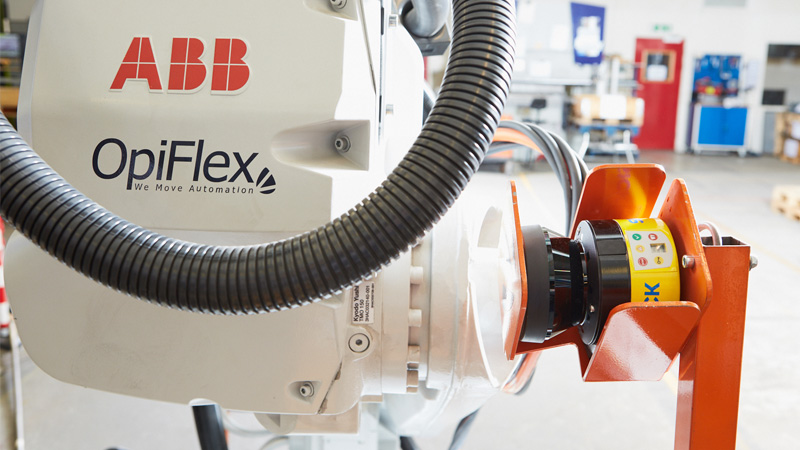
The right safety solution for flexible robots
In the beginning of creating this product, Johan Frisk and his OpiFlex team were mostly met with skepticism.
“We had this innovative idea to develop a mobile solution with fenceless safety for a big robot, and at first people said, ‘That’s impossible. You won’t comply with the safety regulations,'” said Frisk, describing the initial challenges. But the inventors at OpiFlex did not want to give up so quickly and contacted the SICK safety experts. Together, they were able to develop the right concept.
“Over the course of a few workshops, SICK helped us to identify potential risks,” explained Frisk. The support provided by SICK included the risk assessment, comprehensive advice, and support in creating a safety concept for the mobile robot cell, so that in the end they were able to implement the right solution for OpiFlex.
“It was a very exciting project for us. From the initial risk assessment to the hardware and software concept, we supported the customer throughout the entire process,” said Tornros.
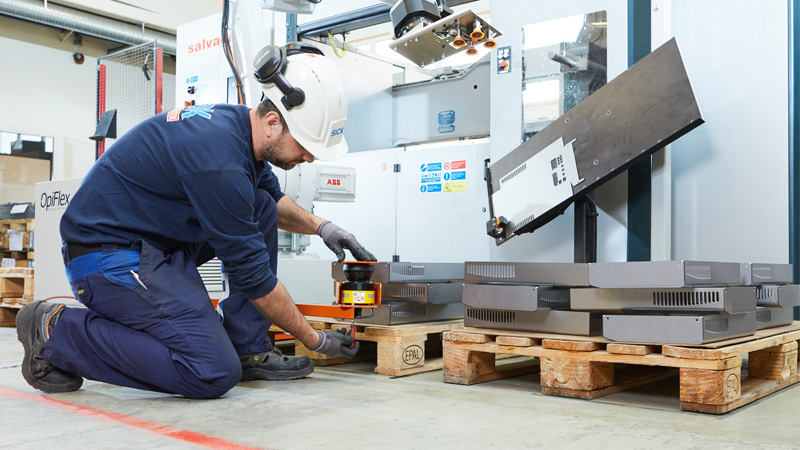
The Era of Industry 4.0: Solving the Challenge of High Mix and Low Volume
The new mega trend of high mix and low volumes is driving the third robot revolution, also known as “flexible robots.” Flexible robots support SMEs, Tier 1 companies, and OEMs with increased flexibility and productivity for both small-series manufacturing and high-volume production. The OpiFlex flexible robot cells were initially created for SMEs with small series and low-machine utilization.
Now, a high number of large corporations, OEMs, and Tier 1 companies have expressed their increased need for flexibility as they go toward higher mix and lower volumes. Some of these companies also want to use an OpiFlex solution for high-volume manufacturing as it is much faster to integrate and set up when required at a new machine or they need flexibility in robot cells. For example, in the case where you need five robots for one product and two robots for another product, flexibility is key.
Furthermore, OpiFlex enables the robot to be programmed extremely quick without prior robot knowledge – in about ten minutes. Instead of programming the robot for several hours, the operator only has to answer a few questions and teach the robot a few simple movements, then it will program itself automatically.
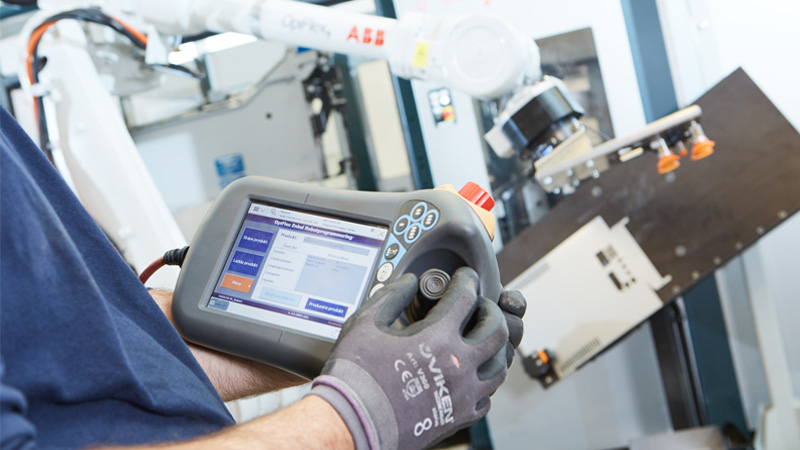
One of the challenges for Tier 1 companies and OEMs working with three to five shifts is to plan production stops when making adjustments or implementing new automation solutions. Traditional robot cell implementations usually stop the manufacturing process for more than ten days, which means loosing up to 30 to 50 shifts. OpiFlex reduces the installation and commissioning time of a complete robot cell by up to 90% – so it takes about two to three shifts only. Especially within a tight production schedule, it is of great advantage that the planning of automated implementation becomes easier due to a minimized loss of production.
The Swedish company has already won several awards for its innovations, including being named as a finalist for the IERA Award, one of the most important awards in robotics. CEO Johan Frisk concludes: “As we are a small, innovative company, SICK played a big part in helping us to achieve our goals. I am very proud to have teamed up with SICK for support to design this flexible and mobile robot solution, which will help small and medium-sized companies in particular to automate smaller production series.”
The aim of OpiFlex is to drive the third robot revolution “flexible robots,” with its various patents for fenceless solution, easy robot programming, and docking solutions. This solution is very flexible and cost-efficient compared to traditional robot cells – and it is powered by SICK products


